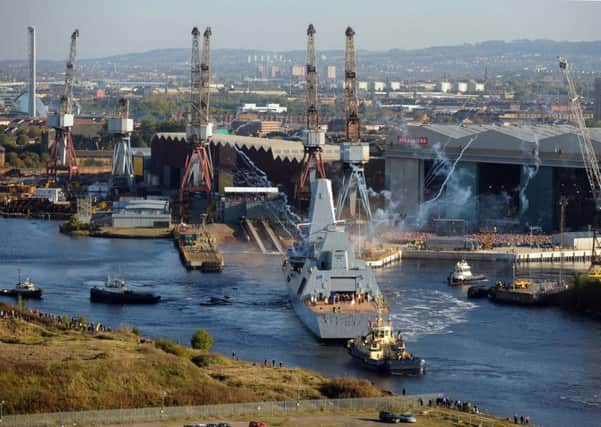Leader comment: Royal Navy ship building huge boost for the Clyde


The announcement by the Defence Secretary Michael Fallon that work on building eight Type 26 frigates at shipyards in Glasgow will start next summer is to be warmly welcomed. It is great news for the Clyde and Scotland. Shipbuilding on the Clyde is an inherent part of the fabric of this nation and this will continue that long and noble tradition.
But more practically this secures the jobs of 2,500 people at the BAE Govan and Scotstoun yards and Mr Fallon said that the jobs would be safeguarded until 2035. It also means that the skills needed to build complex 21st century warships are kept and indeed enhanced as the project goes on.
Advertisement
Hide AdAdvertisement
Hide AdBut it has to be said this announcement has been a long time coming. Work was due to start this year and there has been a lot of uncertainty and fear for the workforce.
Earlier this year the unions at the yards highlighted the issue around timing by saying that up to 800 jobs could be lost if the project was allowed to slip back any further, and there can be little doubt that this pressure has helped concentrate the government’s mind and has prompted them to make this timely announcement.
And also to be applauded is the announcement that a contract for two new offshore patrol vessels would be signed shortly, securing jobs before the Type 26 frigate work is under way.
It does come at a time when there are still many decisions awaited about the defence strcuture north of the border. The MOD is currently carrying out a basing review in Scotland with sites like Fort George and Kinloss facing an uncertain future. The Scottish Government is right to be keen to have these questions resolved.
It would also be accurate to say that the initial promises of work made before the Scottish independence referendum in 2014 by the UK government have not been kept, with the number of Type 26’s scaled back from the initial 13 to just eight in the Strategic Defence Review,
Or perhaps it might be more accurate to say the UK government has not fulfilled that promise yet.
Because there are another five ships to be built, and were they to come to the Clyde the UK government could argue that it had indeed kept its promise.
These smaller Type 31s have not yet been designed - work is ongoing - and yesterday Mr Fallon could not be pushed in to promising the work would come here, although he did go as far to say that BAE systems would be in pole position to win the orders.
But waiting for that work will simply mean more uncertainty and concern. Mr Fallon should commit now to those vessels coming to the Clyde and deliver more good news to Scotland.